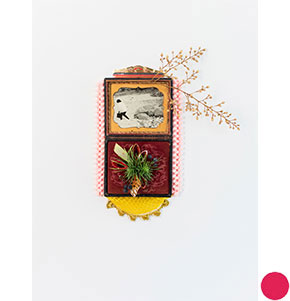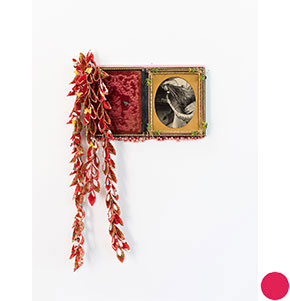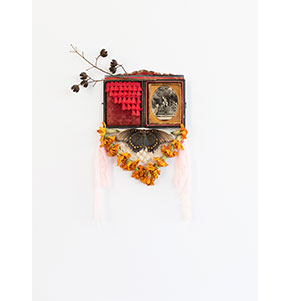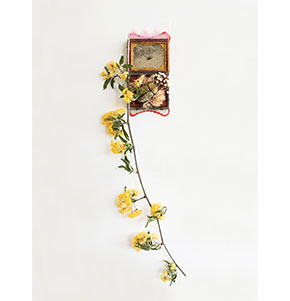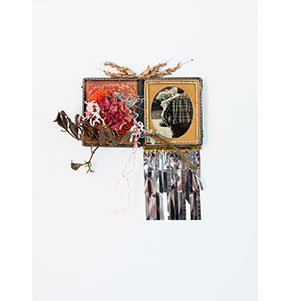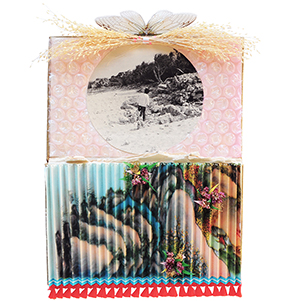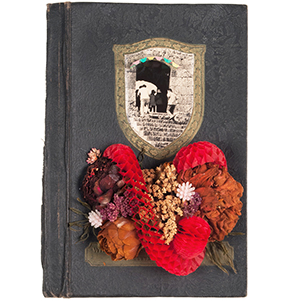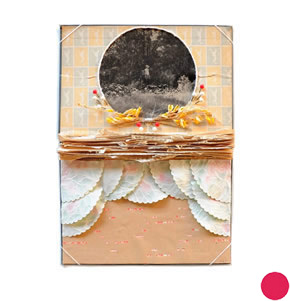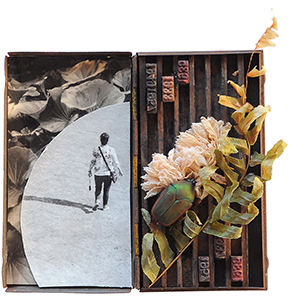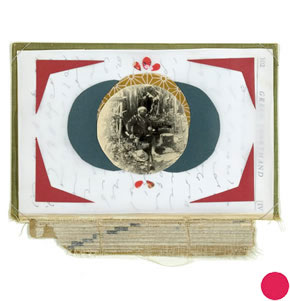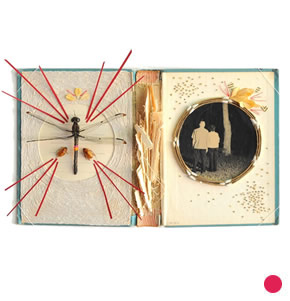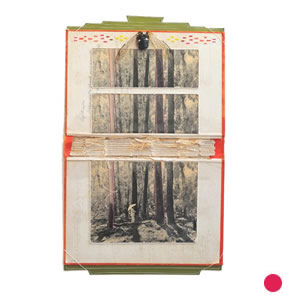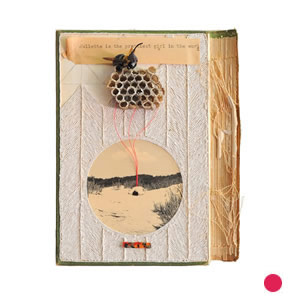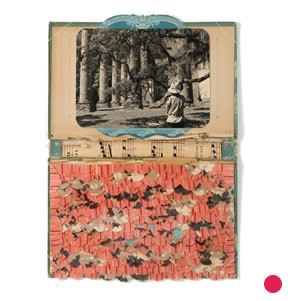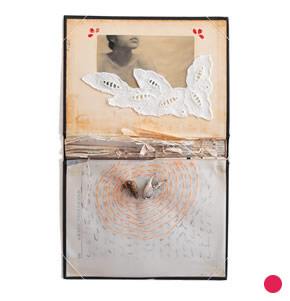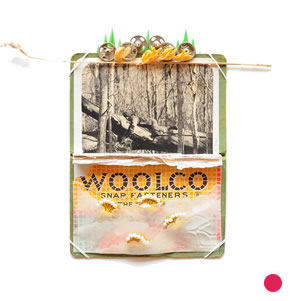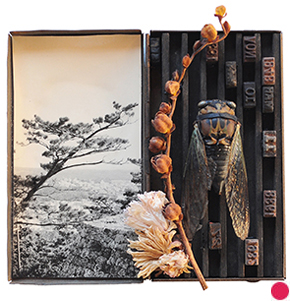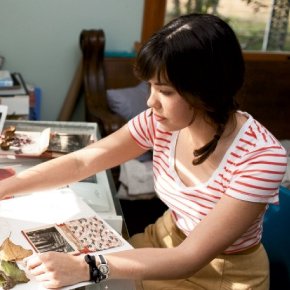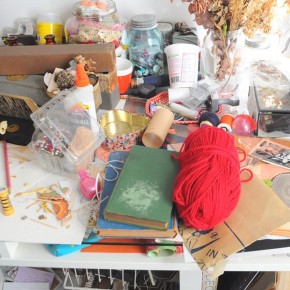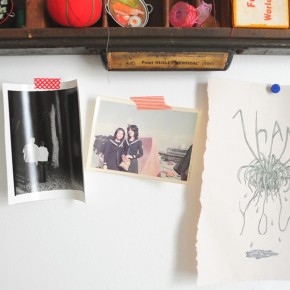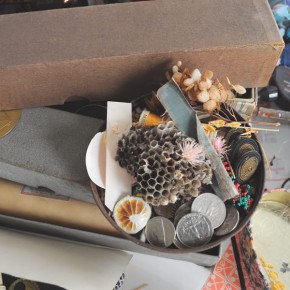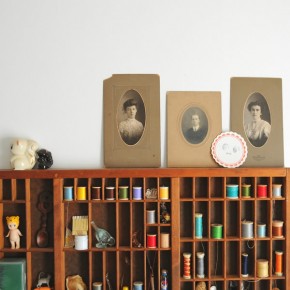A creatively curated, online market for artists to show their work & tell their stories
NINA GARNER tells Her story
I have long been inspired by 19th century portrait photography, specifically the decorated photographs that served as mementos of loved ones, both living and dead. I try to create work that encompasses some of the same concepts as those mementos by turning a flat, one-dimensional photograph into a three-dimensional piece that will preserve my subjects forever, never to be forgotten. Over the years, my work has evolved to not only achieve this, but it has expanded to preserve moments in time, and memories both real and imagined. To do this, I begin my process with a very tedious and very delicate method of layering various materials over my own black and white photographs. Some of the materials I use include fabric, lace, ribbon, paper, insects, dried flowers, leaves, and other natural and found elements. I aim to create work that encompasses the essence of my subjects while giving the viewer a glimpse into my life and, ultimately, how I perceive the world.
Clearly, you have a love of objects from nature. Have you always collected those kinds of things? What may have instilled this attraction?
I didn’t always collect objects from nature. My work kind of evolved and turned me into a collector. Going on photoshoots to forests, beaches and secret fishing holes naturally I’d find interesting things to bring home and incorporate into my work. I also worked on a farm for two years and would find insects and wild flowers during the day and would bring them home. Now that people know I use insects in my work I often receive them as gifts from friends and family.
Your work is so sentimental, genuinely sweet and heartfelt. Would you elaborate on this a little?
I guess my work tends to be this way because each piece is driven by a specific person that I’m close to. Either they are featured in the photograph I’m using or maybe they gave me an object or textile I’m using to decorate it with. Close personal relationships are a good driving factor for my work. Without that emotional connection my work would be meaningless to me.
Do you have a favorite thing/object in your studio?
I don’t think I can pick just one favorite thing in my studio. My desk is full of odds and ends that I have a hard time keeping organized. When I’m working on a piece I tend to spread out all my materials so I know what my options are. It’s always a big mess. But it’s important to have a few key tools at hand when needed such as a nice pair of textile scissors, a small hand held ruler and an endless amount of toothpicks. It’s the small things that make a difference.
The soundtrack of your life would include the following albums…
Otis Redding ‘History of Otis Redding’
Electric Light Orchestra ‘Time’
The Smiths ‘Strangeways, Here We Come’
Talking Heads ‘Stop Making Sense’
Who is your most beloved teacher? Mentor? Why?
When I was in the ninth grade my father gave me my first 35mm film camera and encouraged me to pursue photography. He was an early mentor to me in the beginning, a big reason I still take photos today. Later, as I started studying photography in college and developing my own style a big mentor to me at the time, and even now, was the photography lab technician at my college, Townsend Davidson. Townsend is a good friend and makes frequent appearances in my work. Without his professional assistance and encouragement my work would not be what it is today. I owe him a lot.
Can you share a bit about your process?
My process is pretty consistent. I try to photograph my subjects first so I have an image to work around. Then I’ll experiment with different materials till I feel confident enough to start gluing. Sometimes it comes very easily other times days and days will go by until it feels right. I think the fact that some photographs look old and some don’t depends on what camera I use. I started out using a manual 35mm film camera and modified the prints as I printed them to make them appear old. Later, I inherited a really nice medium format camera and fell in love with it’s capabilities. The quality and detail captured, to me, is like butter. So I tend to not modify the prints as much and just let them speak for themselves.
About Nina:
Nina Garner was born September 6, 1986. She grew up in various parts of the United States and Okinawa, Japan. In May of 2009 she graduated with a B.A from the College of Charleston in Charleston, SC where she currently lives. Here’s a link to a piece written about Nina in Charleston Magazine written by Amy Mercer. Link to her personal site here.
